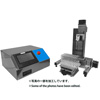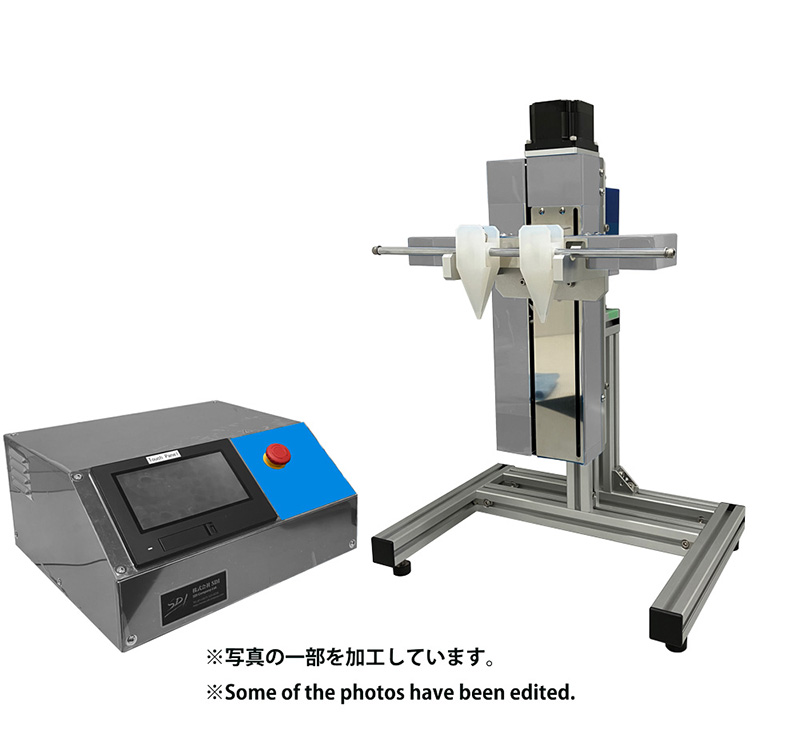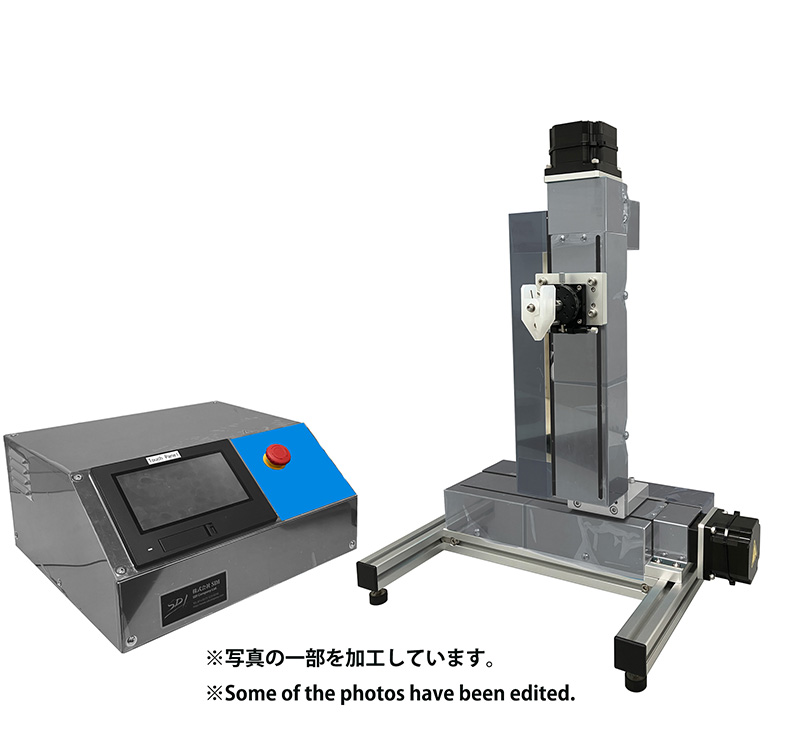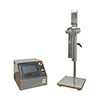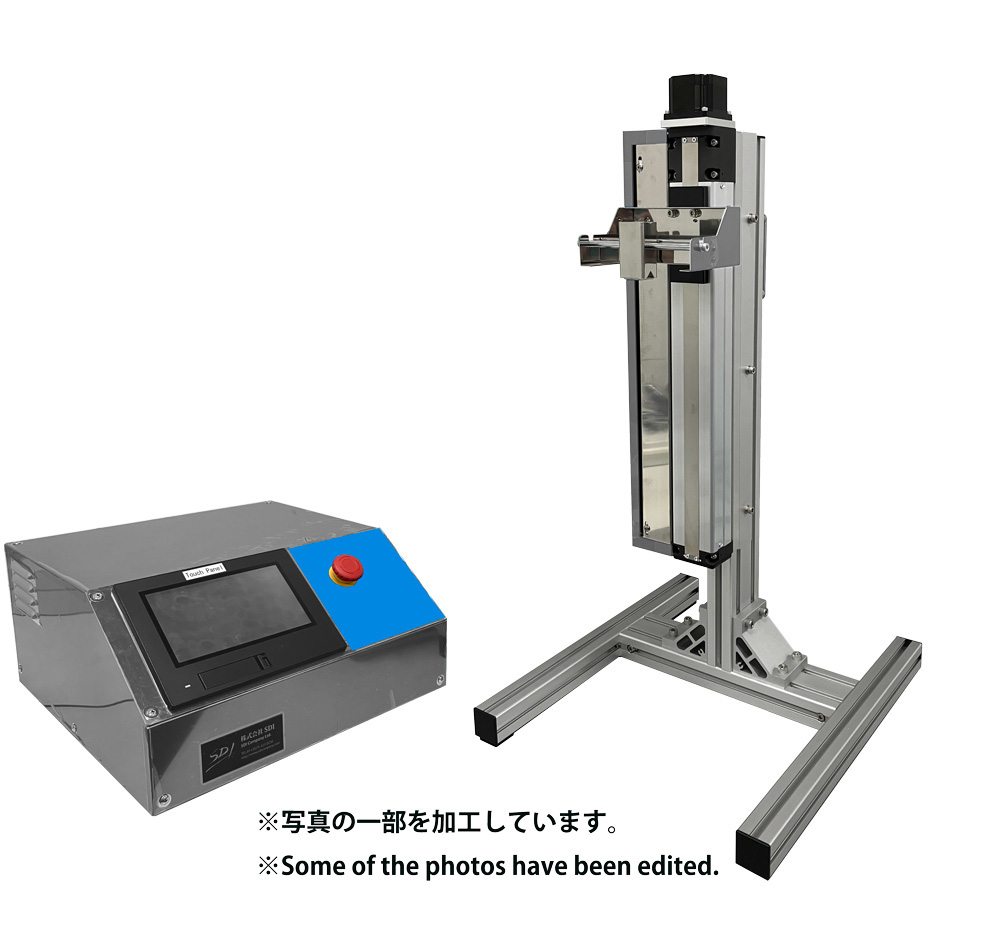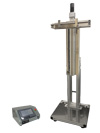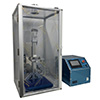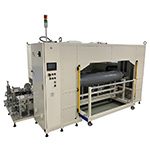Machine Translated by Google
Formation of oriented organic thin films by microdip MD-0408
Hiroaki Tanaka and Tsunanori Hiroshima, Graduate School of Medicine and Engineering, Yamanashi University
(2007.May.31)
1. Introduction
Imparting orientation to organic thin films is of great interest because it has the potential to provide a variety of functionalities.Hydroxypropyl cellulose (HPC) is widely known as a lyotropic liquid crystal material that exhibits a cholesteric liquid crystal phase in a certain concentration range in water. In this study, we used a micro dip coater with nanometer-order precision to control the dip speed.
The aim is to form an oriented organic thin film by using MD-0408 to pull a glass substrate out of an aqueous HPC solution.
2. Experimental Method
The coating solution used was an aqueous solution of HPC material (Tokyo Chemical Industry Co., Ltd.), which has a viscosity of 1000 to 4000 cps in a 2 wt% aqueous solution, prepared in various concentrations (4 wt% in this report) with pure water.The substrate on which the HPC film is formed is a slide glass, which is first cleaned with an organic solvent and then hydrophilized by UV irradiation. As shown in Figure 1, the lower half of the substrate is immersed in the HPC aqueous solution and then pulled up vertically at a constant speed of several ÿm/s to several tens of ÿm/s. This pulling direction is hereafter referred to as the dip direction and is represented by the symbol "ÿDip". After dip coating The substrate is left to dry naturally at room temperature
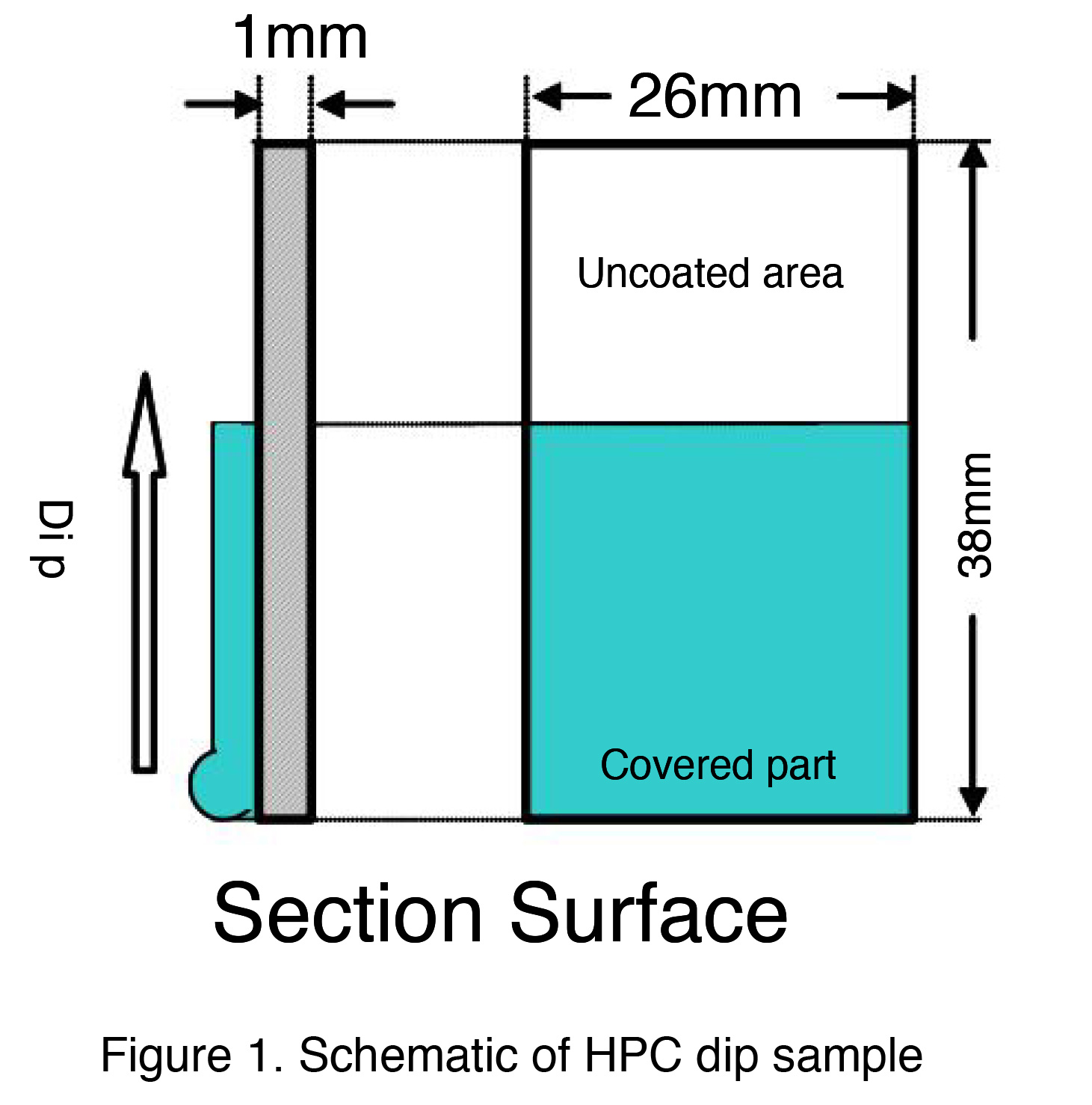
3. Experimental results
Figure 2 shows the results of pulling at a speed of 10 ÿm/s.Raised HPC coat sump The observation was performed by rotating the sample between crossed polarizers. The angle ÿ is the angle between the dip direction and the transmission axis An of the analyzer. All eight photographs are taken within the red dotted circle in the figure.
The part of the image was observed.
HPC coated and uncoated parts The boundary between the two is shown by a red dotted line in the photographs at ÿ = 45°. The uncoated parts in each photograph are extinct. In contrast, the parts covered with HPC (covered 45° aUrnecaoUvenrceodvered area 315° In the covered part, ÿ = 45°,
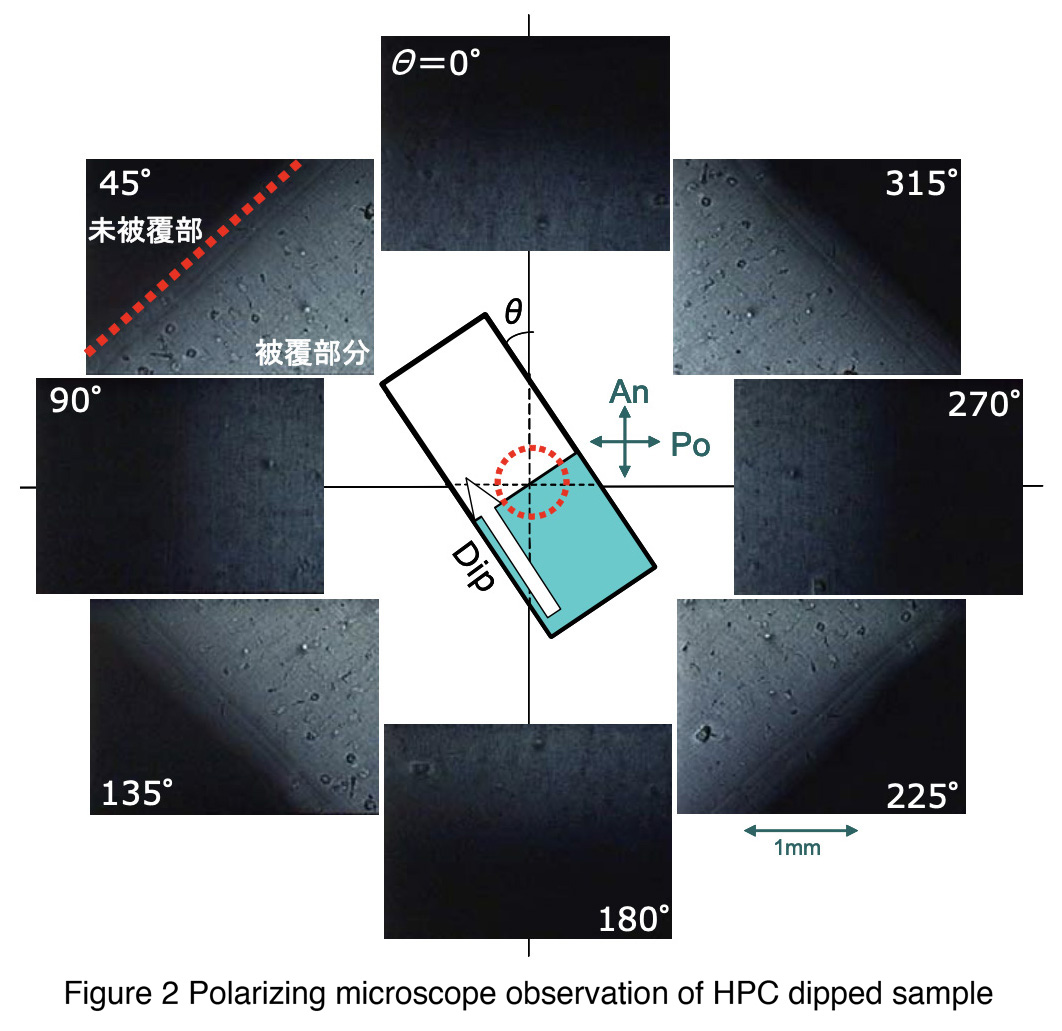
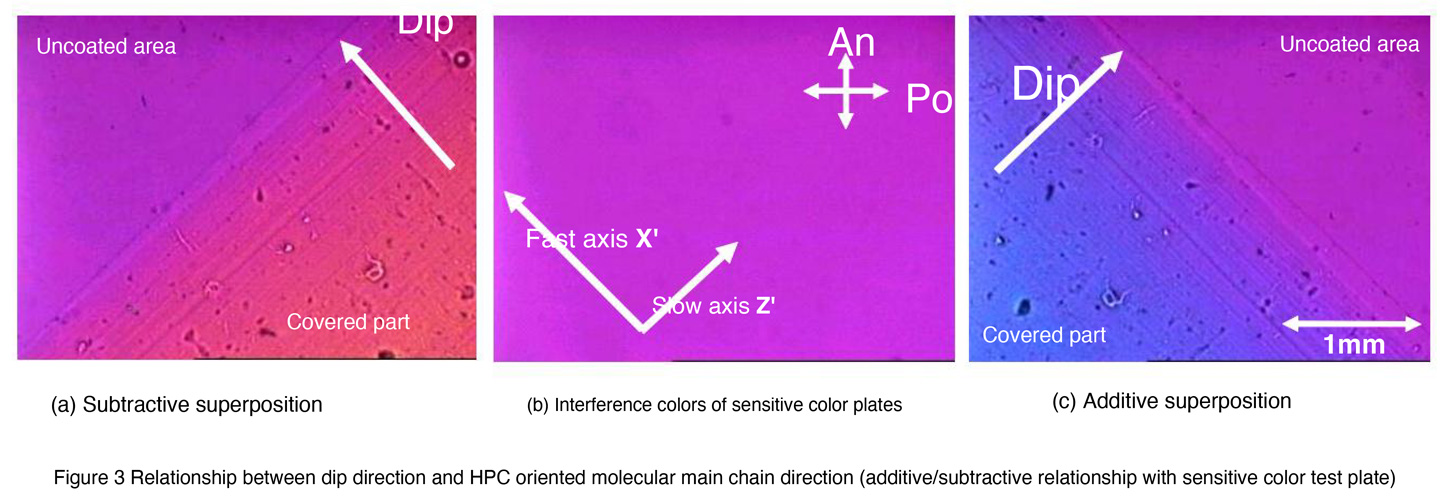 Bright at 135°, 225°, and 315° (diagonal positions), and dark at ÿÿ0°, 90°, 180°, and 270° (extinction positions).
Bright at 135°, 225°, and 315° (diagonal positions), and dark at ÿÿ0°, 90°, 180°, and 270° (extinction positions).This observation result indicates that the HPC film is optically uniaxially aligned in the dip direction.
FIG. 3 shows the retardation (relationship between refractive index anisotropy ÿn and film thickness d) of this uniaxially oriented HPC sample.
The sample is then subjected to a sensitive color test to determine the product d·ÿn, the optical path difference between the ordinary and extraordinary rays.
(b) shows the interference color obtained by overlapping the sample with a sensitive plate (optical phase shift plate).
The interference color of the color plate (retardation = 530 nm) only is shown. (a) and (c) are respectively When the dip direction of the HPC film is parallel to the fast axis X' and slow axis Y' of the sensitive color plate, The interference colors shown are shown in Fig. 1. By comparing and contrasting the Michel-Levy interference color diagram1), (a) and (c) Then, the retardation of the sensitive color plate at 530 nm and the retardation of the HPC film are subtractive and inversely proportional to each other.
Therefore, the molecular long axis (main chain) of the formed HPC film is The orientation is thought to be along the dip direction, and the resulting retardation is approximately 50 nm.
However, the details of this orientation need to be further verified using other evaluation methods.
As can be seen from the diagonal positions in Figure 2 and the micrographs in Figures 3(a) and (c), the surface of the HPC thin film has There are also deposits that appear to be dissolved residues from preparing the HPC solution, and grooves extending perpendicular to the dipping direction.
The formation of fine structures with a morphology was also observed.
is the effect of liquid surface sway caused by vibration. The system is placed on a vibration isolation table.
I think that this can be avoided by installing it.
As a typical surface topography, the chain molecular groups of HPC are oriented.
The dip shown in Figure 4 is believed to be due to the It was also confirmed that striped structures running parallel to the direction of the sieve were formed.
The formation of such a striped structure is It varies considerably depending on the conditions.

4. Summary Figure 4. Striped structure of HPC dipped film
By dip-coating with an aqueous solution of HPC, which is a system that can take on a lyotropic liquid crystal phase, An oriented organic thin film with optical anisotropy was formed on a glass substrate.It is possible that anisotropy is manifested not only in the anisotropy but also in other physical properties. Further evaluation is required to confirm this.
In addition, the various functions expected from organic films are fundamentally determined by the material and its orientation.
However, in order to realize functional membranes suitable for specific applications, the degree of polymerization and solubility must be carefully considered.
It is necessary to optimize the film formation conditions, such as the liquid concentration, viscosity, and substrate lifting speed.
References 1) For example, Polarizing Microscope: by Seitaro Tsuboi (Iwanami Shoten), p.160, fold-out color plate
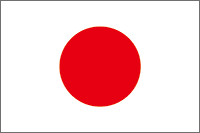 Japanease
Japanease English
English






